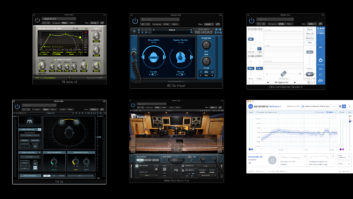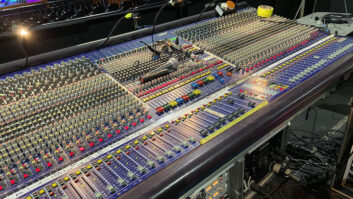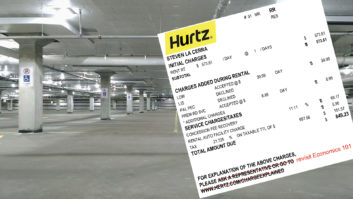There’s a certain irony to the fact that we put so much time and energy into getting the best fidelity possible in our recordings, yet sometimes we purposely reduce the sound quality for artistic reasons.
I was thinking about this recently as I checked out a new plug-in called Bad Tape from the German developer Denise. It allows you to degrade your sound in several ways that mimic the worst aspects of tape. On the Denise website, it says, “We emulated extreme tape artifacts, and man does it sound bad.”
Bad Tape allows you to dial in simulated wow, flutter, hiss, squeal, detune (which gives you slowdown effects) and another category entitled, “Harm.” With extreme settings, you can mangle any track, but you can also use the effects subtly to add character. It’s a cool plug-in and ridiculously affordable.
Read more Mix Blog Studio: Before You Hit That Upgrade Button…
The intentional degradation of audio and lo-fi production, in general, got me thinking about atonal music. Okay, stay with me here. I know this is not the most obvious correlation, but there is a conceptual relationship. They are both ways of approaching music that will not appeal to the mass of listeners, only a specialized subset.
I will freely admit that I can’t get used to atonal music. I’ve always leaned toward the melodic side, and when I hear dissonance, it usually turns me off. That’s why I never liked punk but always liked melodic rock with lots of hooks and pleasing chord changes. Not sappy, mind you, but pleasing.
Similarly, when it comes to jazz, I prefer the more melodic players—for example, Oscar Peterson or Sonny Rollins—and shy away from Sun Ra or Ornette Coleman or other players who lean toward the atonal (although I’ve always liked Thelonious Monk’s somewhat dissonant harmony).
Why do some people like discordant music and others loathe it? I did some poking around online to see what I could find out on that score, and came across some interesting discussions on the subject, including this one on the Talk Classical site.
Some people surmise that it’s a question of pattern recognition. Because atonal music—such as modern classical or free jazz—eschews conventional musical patterns (both rhythmic and melodic), listeners who aren’t accustomed to the new patterns find them discordant.
Some of it has to do with what part of the world you were raised. In Western societies, we’re used to a musical scale whose smallest interval is a minor second—one semitone. But musical styles from Eastern countries, in particular, can have much smaller intervals than that, and therefore very different melodic structures. There’s also some evidence that there may be a genetic component to musical taste.
Even though I’m dissonance-averse, I do like to throw in a little bit of chromaticism when playing or writing music; for example, adding a chromatic run in a melody to create some excitement and contrast. As any painter will attest, contrast is always beneficial for accentuating something.
Bringing it back around to the studio, you can create contrast by creatively degrading the sound quality in a particular track in a mix. Whether you’re using a tape-effects plug-in like Bad Tape or a simple bitcrusher, it’s an excellent way to add character and excitement to a mix.
Just don’t go too far—unless, of course, you want to.







